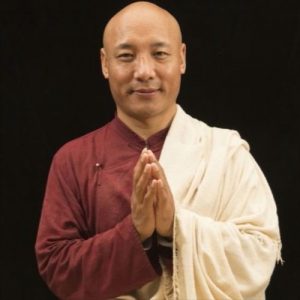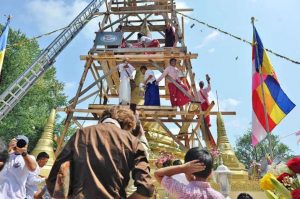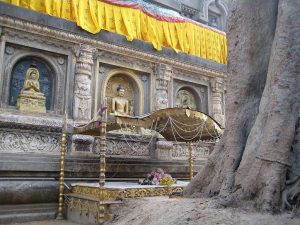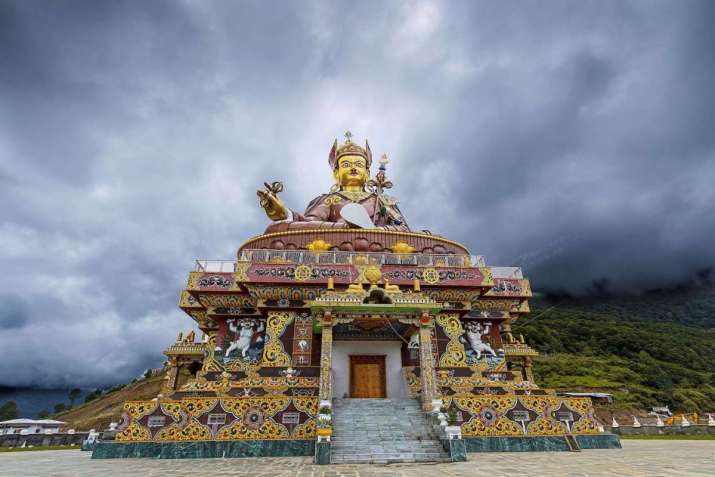
During the eighth century, Buddhism began to take strong root in Tibet under the patronage of the mighty king Trisong Detsen, but the propagation of the Dharma was not without challenges. The Tibetan people didn’t immediately welcome this new foreign religion, which contrasted uncomfortably with their indigenous culture in almost every sense.
The learned Indian monk Shantarakshita was invited by the king himself to build the first Buddhist monastery as the basis for a monastic community that would be essential to growing the tradition. But people rebelled against this development. Shantarakshita was probably a typical, refined Indian monk with a shaven head who may not have had the skill to communicate effectively with Tibetans at first encounter. To overcome these challenges, the king invited the Buddhist master Padmasambhava, who also hailed from the Indian subcontinent yet knew how to communicate with Tibetans, and whom Tibetans understood right away. Tibetan Buddhism would not be the same were it not for Padmasambhava. His legacy added precious elements to the Dharma in Tibet that remain to this day.
Padmasambhava, also known as Guru Rinpoche, is loved and revered as a legendary figure in Tibet, just as Bodhidharma is in China, Korea, and Japan. There are two major versions of his life story: in the teachings of the tertons, or treasure revealers, he is a mahasiddha and tantrika with many dimensions; someone who cannot easily be defined or pigeonholed. He is more than a monk, yet he cannot be regarded as a layperson. His iconography depicts his core nature and the nuances of his being more than words can describe. He wears yellow monastic robes, royal coats, earrings, holds skull cups, and has long hair hanging to his shoulders. These images can give an immediate sense of inner liberation and an entire nonverbal teaching on the true Dharma that is complete, vast, deep, and beyond the bondage of the limits intellectual comprehension.
His image invites us to express love, dignity, and compassion, as well as to be free from various conventions and belief systems that are merely creations of us humans, who can often be wrong and go offtrack more easily than we care to admit. Above all, his iconography gives us divine permission to enjoy our human incarnation in this mundane world along with its myriad delights, and reminds us that true spirituality is not about rejecting life, being puritanical, or worshiping some kind of perfect ideal that is devoid of sensuality, lacking an intrinsically human impulse to savor life’s magic. His yogic style and royal robes remind us to embrace all the delights of life as long as we live in human form. At the same time, his monastic robes remind us to not get too caught up in sensual and carnal pleasures, otherwise we can end up being hedonistic or materialistic, seeking satisfaction only from the outside world and believing with almost religious certainty that all fun comes from outside.
Generally speaking, the sutras attributed to the Buddha are perfect in themselves as guides on the path to inner awakening. Yet they’re often misunderstood by followers, who interpret the sutras as though they speak with the voice of puritanism. There is a tendency to believe that the sutras encourage us to see the world as meaningless, with all the sensual pleasures being traps laid by Mara or some devil to corrupt our consciousness and veil our minds; to view the flesh and bones of our body as repulsive stuff that serve merely as fuel to spin the wheel of endless misery. What a bleak view! Is this truth what the sutras express? You can question what the sutras express while their narratives directly describe such a bleak view that the human world is so impure.
Yet the sutras do not expound as negative a view as many people might understand. They show that the reality we often perceive is not always the way things are in themselves, such as beautiful, ugly, or pleasant. Reality is more what we see through the lens of our own consciousness. Therefore, we should not get lost in a version of reality that can lead us into a prison of grasping and hatred. The sutras are certainly not telling us not to enjoy all the delightful life brings, such as music, food, dance, and romance.
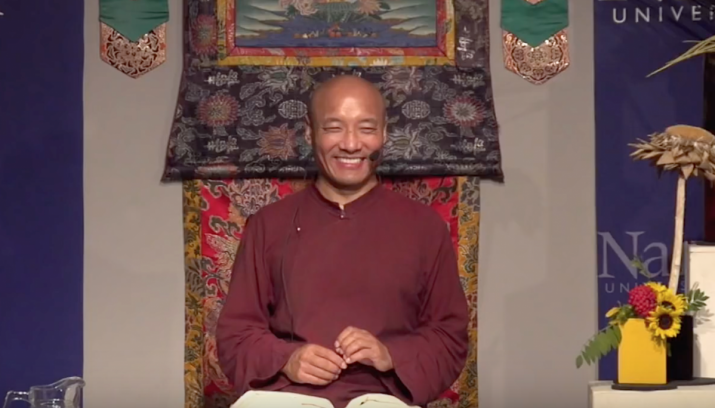
I’m a member of Buddhist community called the Dharmata sangha, headquartered in a charming historical town in northern California. Our temple was once a Christian church that has been reincarnated into a Buddhist temple. Some wonderful teachers from the Tibetan, Zen, and Theravada Buddhist traditions have come here and taught. The temple is simple in its aesthetic, with four main images: the Buddha, Tara, Padmasambhava, and Yeshe Tsogyal. Upon each visit, these sacred images naturally catch my attention and invoke different feelings inside of me. For some reason, Padmasambhava’s image invokes a profound joy that makes my heart want to sing and dance. This might have to do with the fact that I grew up in a culture where Padmasambhava was highly revered.
As little boy, I grew up in a home where a thangka of Padmasambhava was the main sacred object. My grandparents taught me to recite his name whenever I face difficulties in life. This advice made sense to me. Usually, our heart is filled with fear when adversity challenges us to our core, and fear is almost the direct antithesis to joy.
Padmasambhava’s name and image often remind me to let go of my fear and rest in a state of consciousness where joy dances by dropping my identification with the little “self.” I feel so ecstatic whenever I lead people to sing Vajra Guru mantra, which I have done so many times.
Om Ah Hum Vajra Guru Padma Siddhi Hum
In times of confusions like today, I think we can all benefit from bringing the spirit of Padmasambhava into our lives.
See more




